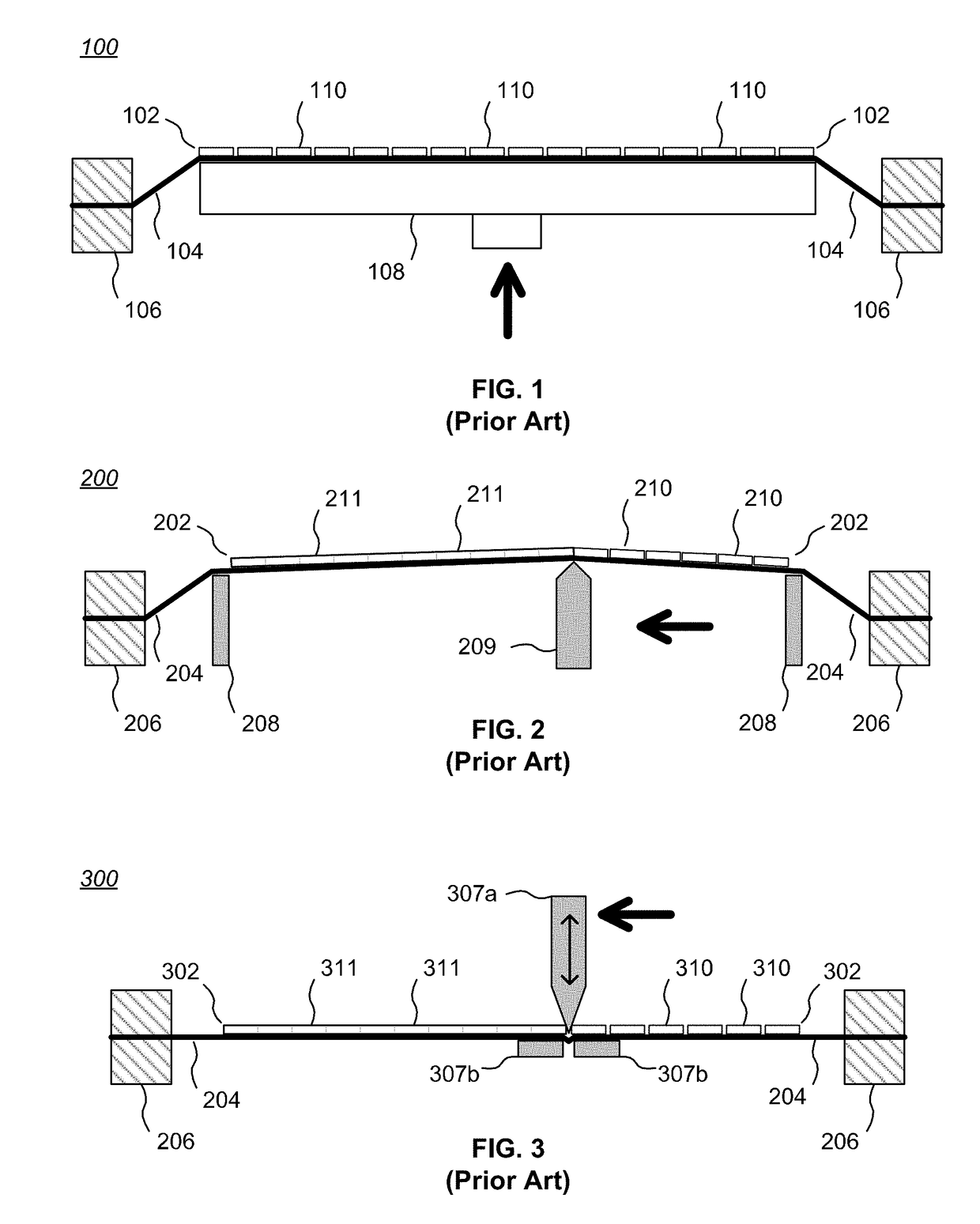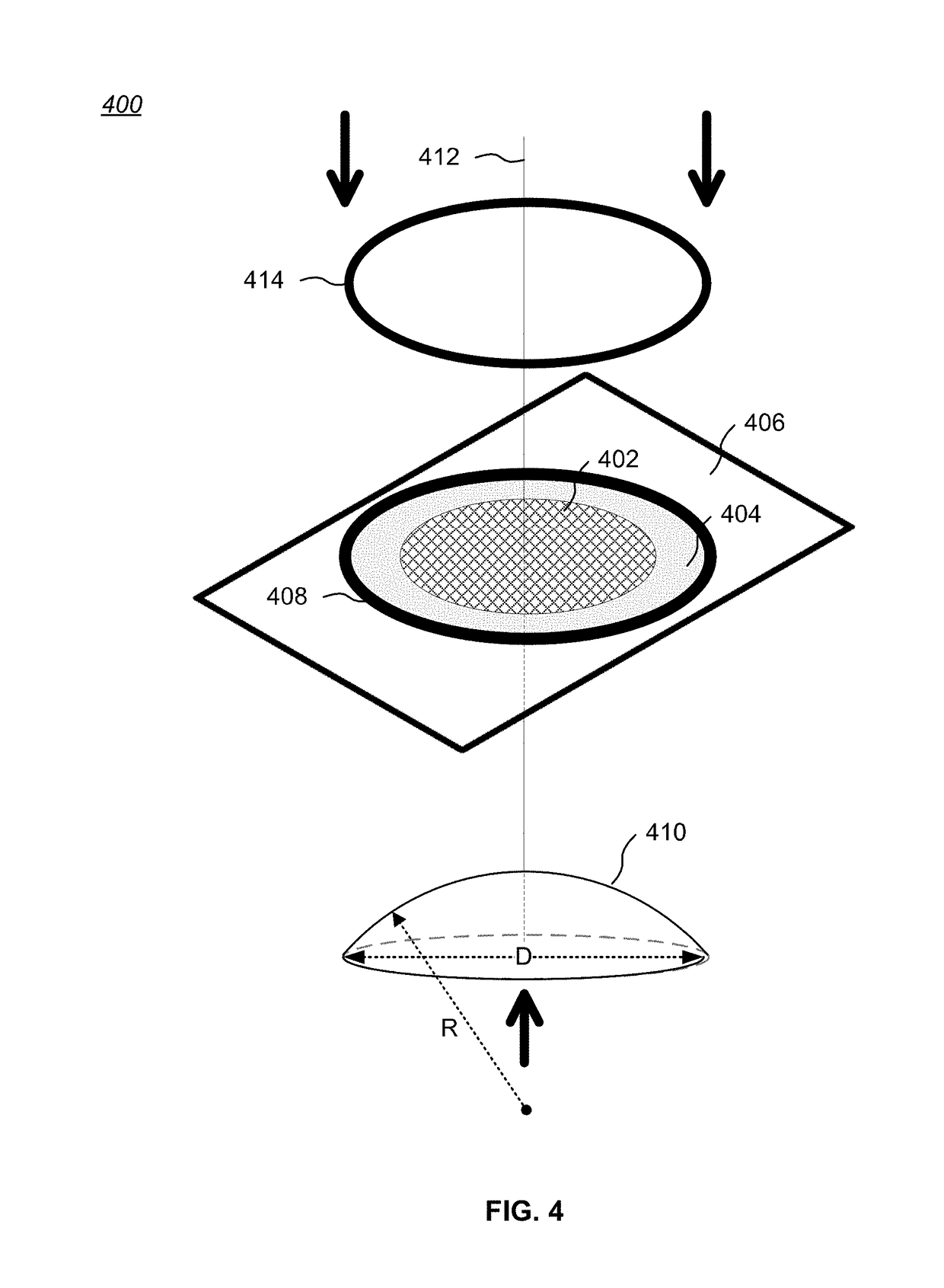Simultaneous Break and Expansion System for Integrated Circuit Wafers
a technology of integrated circuit wafers and expansion systems, applied in the direction of electrical equipment, semiconductor devices, metal working equipment, etc., can solve the problems of increasing the chance of breaking during later assembly steps or in actual use, reducing yield, and ic die strength reduction, etc., to reduce or eliminate die collisions
- Summary
- Abstract
- Description
- Claims
- Application Information
AI Technical Summary
Benefits of technology
Problems solved by technology
Method used
Image
Examples
Embodiment Construction
[0040]The invention encompasses improved apparatus and methods for singulating integrated circuit (IC) dies that reduce or eliminate die collisions, work well with very small dies (e.g., less than about 1.0 mm on the shortest edge), and work well with both uniform grid patterns die layouts and non-uniform grid pattern die layouts (e.g., multi-project wafers or multi-product wafers). Further, embodiments of the invention simultaneously separate dies in two dimensions.
[0041]Embodiments of the invention utilize a simultaneous break and expansion system for separating individual IC dies from a scored wafer substrate, and avoid die collisions by maintaining IC die separation once singulation has occurred. The system may use a variety of scored wafer substrates, and works well in particular with wafer substrates that have been both laser scribed and stealth diced in accordance with the teachings of co-pending U.S. patent application Ser. No. 15 / 432,838, referenced above.
[0042]Overview of ...
PUM
| Property | Measurement | Unit |
|---|---|---|
| Diameter | aaaaa | aaaaa |
| Dimension | aaaaa | aaaaa |
| Tension | aaaaa | aaaaa |
Abstract
Description
Claims
Application Information
 Login to View More
Login to View More - R&D
- Intellectual Property
- Life Sciences
- Materials
- Tech Scout
- Unparalleled Data Quality
- Higher Quality Content
- 60% Fewer Hallucinations
Browse by: Latest US Patents, China's latest patents, Technical Efficacy Thesaurus, Application Domain, Technology Topic, Popular Technical Reports.
© 2025 PatSnap. All rights reserved.Legal|Privacy policy|Modern Slavery Act Transparency Statement|Sitemap|About US| Contact US: help@patsnap.com



